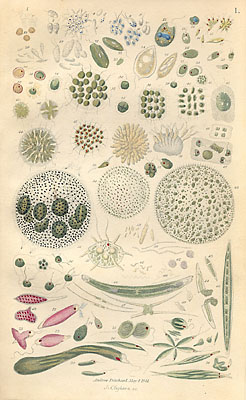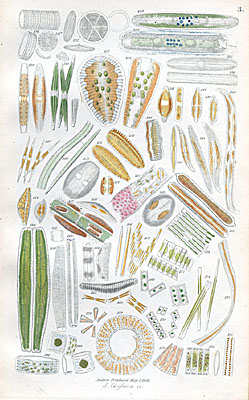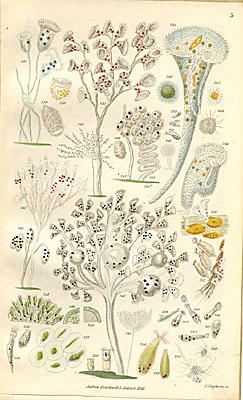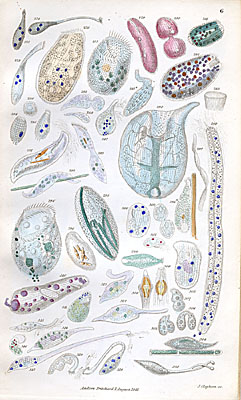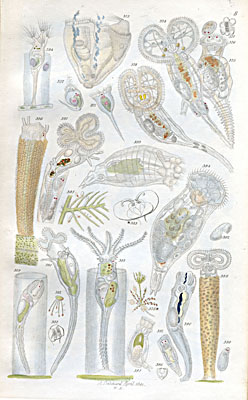About ten or so years ago I ordered, rather absent mindedly, several natural history books from a catalog I had received. One of the books was a definite afterthought at the time, as I had never heard of it before. The title “A History of Infusoria” caught my eye, as did the supposed publication date- 1869. The price was fairly low too, especially for an illustrated Victorian book.Weeks later I received the book and discovered that it was a rebound copy of “A History of Infusoria, Living and Fossil: Arranged According to ‘Die Infusionsthierchen’ of C. G. Ehrenberg” by Andrew Pritchard, M.R.I., and that it had really been published by Whittaker and Co., London in 1845. I was at first disappointed that they had not sent exactly what I had ordered but then discovered that the book had twelve delightful hand colored plates of everything from Volvox to various rotifers, all delicately detailed as only Victorian illustrators could. The details were fantastic (although some may be a bit fanciful) and the style was enchanting.
I have ever since cherished this wonderful book with its quaint color plates. After seeing Dave Walker’s gallery of Victorian microscopy illustrations I thought that I might share some of these neat plates with others interested in such things. Following are five of the color plates and a few notes on each, including a few of the names given to the illustrations in the text.
This gallery will, I hope, give the reader a flavor of this remarkable book with its especially remarkable artwork. I doubt that I would ever be able to pick up a similar volume for the small amount that I originally paid.
Comments to the compiler David Richman are welcomed.
